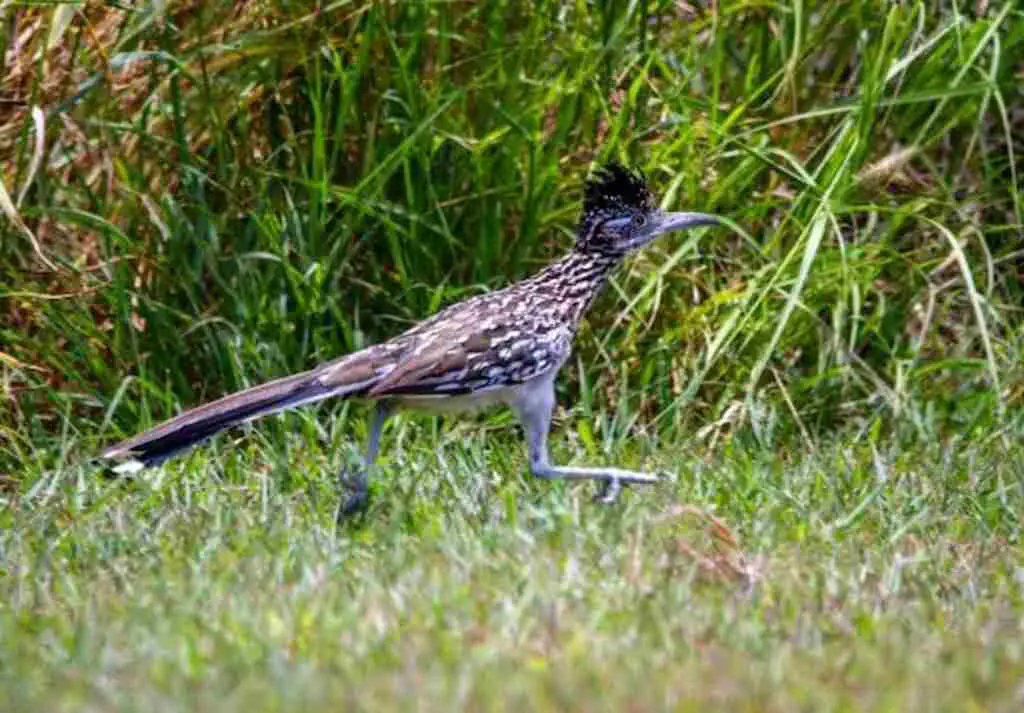Why Do Some Birds Hop And Others Walk? Discover the quirky world of avian locomotion and uncover the secrets behind their unique movements.
From hopscotch enthusiasts to confident walkers, this article unveils the fascinating reasons why birds have their own signature style. Get ready for a delightful exploration into the avian kingdom!
Table of Contents
- 1 Overview
- 2 Hopping vs. Walking Birds
- 3 Anatomy and Body Structure
- 4 Muscle Usage and Efficiency
- 5 Adaptations to Habitat and Environment
- 6 Feeding Habits and Foraging Strategies
- 7 Balance and Stability
- 8 Influence of Evolutionary History
- 9 Bird Migration and Locomotion
- 10 Flight vs. Terrestrial Movement
- 11 Differences in Leg Length and Shape
- 12 Benefits and Drawbacks of Hopping vs. Walking
- 13 Examples of Hopping and Walking Birds
- 14 Role of Predators and Prey
- 15 Future Research and Implications for Conservation
- 16 Frequently Asked Questions
- 16.1 What is the average lifespan of hopping birds compared to walking birds?
- 16.2 Are there any hybrid birds that can both hop and walk?
- 16.3 Can a bird switch between hopping and walking depending on its environment?
- 16.4 Does the mode of movement affect a bird’s ability to fly?
- 16.5 Are there any cultural or symbolic meanings associated with hopping or walking birds in different parts of the world?
- 17 Conclusion
- 18 Author
Overview
The current section provides an overview of the factors that contribute to the mode of movement exhibited by different types of birds.
Birds exhibit a range of modes of movement, including hopping and walking, which are determined by a combination of factors including body structure, habitat, and diet.
Each mode of movement has its benefits and drawbacks, and it is important to understand the ecological niche of a bird to understand why it has evolved to move in a particular way.
The mode of movement of a bird is largely determined by its body structure and anatomy.
Birds with longer legs and a more elongated body shape are more likely to walk, while those with shorter legs and a more compact body shape are more likely to hop.
This is because the structure of their legs and feet is better suited to the different modes of movement, allowing them to move more efficiently and effectively in their environment.
Habitat and environment are also important factors that contribute to the mode of movement exhibited by birds.
Birds that live in densely forested environments are more likely to hop, as this mode of movement allows them to navigate the understory and forest floor more easily.
On the other hand, birds that live in open grassland environments are more likely to walk, as this allows them to cover greater distances more quickly.
Understanding the evolutionary implications of bird locomotion is also important in understanding why some birds hop and others walk.
Over time, birds have evolved different modes of movement in response to their environment and ecological niche.
This means that the way a bird moves is not just a result of its anatomy and environment, but also reflects its evolutionary history and the adaptations it has made to survive and thrive in its environment.
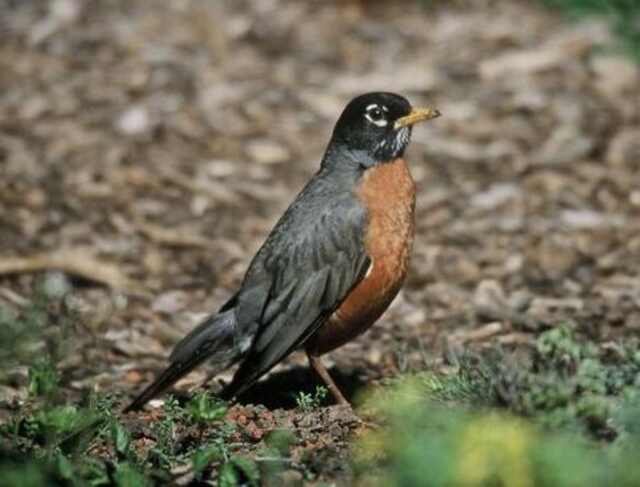
Hopping vs. Walking Birds
An examination of bird locomotion reveals that specific avian species have evolved to utilize either hopping or walking as their primary mode of movement, with body structure, anatomy, habitat, environment, and feeding habits all playing a role in determining their preferred method of locomotion.
Hopping birds are those that move by hopping or jumping, using their legs and feet to propel themselves forward. Walking birds, on the other hand, move by striding one leg after another in a coordinated fashion.
Benefits and drawbacks: Hopping birds have an advantage over walking birds when it comes to agility and maneuverability.
Their ability to jump and hop allows them to navigate through difficult terrain, such as rocky mountainsides or dense forests.
However, hopping birds have a slower top speed than walking birds, which can be a disadvantage when escaping predators.
Walking birds are faster and more efficient at covering long distances, making it easier for them to migrate or forage for food over a large area.
Adaptability and evolution: The choice between hopping and walking as a mode of locomotion is influenced by a variety of factors, including habitat, body structure, and feeding habits.
For example, hopping birds tend to have shorter legs and stronger muscles, which are better suited for jumping and hopping.
Walking birds, on the other hand, have longer legs and a more streamlined body shape, which allows them to move more efficiently on the ground.
Over time, these adaptations have become more refined through natural selection, allowing birds to become more specialized in their preferred mode of movement.
Ecological implications: The choice between hopping and walking can have ecological implications as well.
Hopping birds, for example, are well-suited for living in dense forests or rocky terrain, where they can use their agility to navigate through difficult terrain.
Walking birds, on the other hand, are better suited for open grasslands or wetlands, where they can cover long distances in search of food.
The distribution of these two types of birds can have a significant impact on the overall ecology of a given area, as well as on the interactions between different species of birds and other animals.
Bird locomotion is a complex and fascinating subject that is influenced by a wide variety of factors.
In the next section, we will examine the role that body structure and anatomy play in determining a bird’s preferred mode of movement.
Anatomy and Body Structure
Understanding the anatomy and body structure of birds is crucial in comprehending the evolutionary trends that have resulted in their preferred mode of movement, whether it be hopping or walking.
Comparative anatomy studies show that birds have evolved specialized biomechanical adaptations that enable them to move efficiently on land.
The anatomy of the legs and feet, in particular, is central to this adaptation.
In hopping birds, the legs are relatively short and powerful, with well-developed thigh muscles, while the feet are strong and have sharp claws for gripping and perching.
In contrast, walking birds have longer and slender legs that are adapted for stability and balance. The feet are typically flat and have webbed feet that aid in propulsion and navigating through water.
The skeletal structure of walking birds is also different from that of hopping birds.
For instance, walking birds have a fused ankle joint that provides stability and reduces the risk of injury during long-distance walks.
The anatomy and body structure of birds, therefore, play a fundamental role in determining their preferred mode of movement.
The evolution of bird locomotion has been influenced by numerous factors, including habitat, environment, and feeding habits.
For instance, hopping birds are well-suited for life in dense vegetation and rough terrain, where they can quickly navigate through bushes and shrubs.
Similarly, walking birds are adapted for life on the ground and near water bodies, where they can easily walk and swim.
The anatomy and body structure of birds, therefore, reflect the evolutionary adaptations that have enabled them to thrive in their respective habitats.
Table: Anatomy and Body Structure
| Bird Behavior | Description |
|---|---|
| Hopping | Birds with short legs and strong feet, such as sparrows and finches, hop using both legs simultaneously. This hopping motion is facilitated by their body structure. |
| Walking | Birds with longer legs, such as herons and storks, walk by moving one leg at a time in a coordinated manner. Their elongated legs allow for a more efficient walking gait. |
In the next section, we shall explore the muscle usage and efficiency of hopping and walking birds.
The anatomy and body structure of birds play a crucial role in determining their muscle usage and efficiency, which impact their mode of movement.
By understanding these factors, we can gain insight into the unique adaptations that have allowed birds to achieve remarkable feats of locomotion.
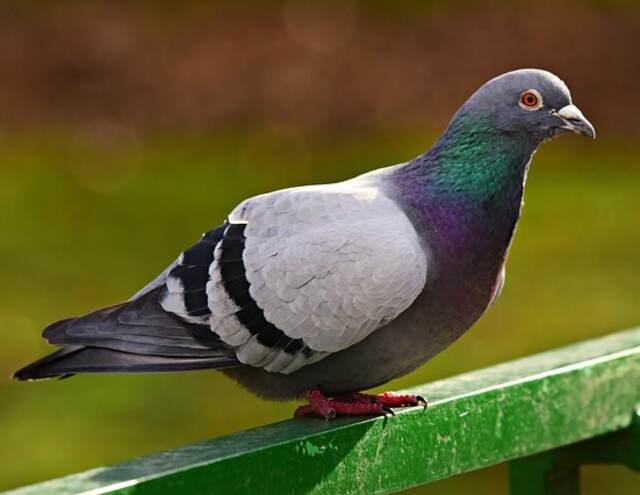
Muscle Usage and Efficiency
Examining the muscle usage and efficiency of avian locomotion provides valuable insight into the adaptations that have enabled certain species to prefer hopping or walking as a mode of movement.
Efficiency trade-offs are crucial in determining the mode of movement for birds, as each mode requires different muscle activation and metabolic costs.
Hopping birds such as sparrows and finches have shorter legs and larger leg muscles compared to their body size, which allows for more powerful and efficient hopping.
In contrast, walking birds such as chickens and turkeys have longer legs and more evenly distributed leg muscles to support their weight during walking.
Efficiency trade-offs in muscle usage are not the only determining factor in a bird’s mode of movement. The environment and habitat in which the bird lives also play a significant role.
For example, hopping birds are often found in environments with dense vegetation, which makes hopping a more efficient mode of movement to navigate the obstacles.
Walking birds, on the other hand, are commonly found in open fields where walking is the most efficient mode of locomotion.
Despite the efficiency trade-offs, some species of birds have adapted to be proficient in both hopping and walking.
For example, the American robin is a hopping bird but can also walk efficiently on the ground.
This adaptation is due to their leg muscles being able to switch between hopping and walking modes with ease.
In summary, the muscle usage and efficiency of avian locomotion are crucial in determining a bird’s mode of movement.
Efficiency trade-offs, muscle activation, and metabolic cost are all factors that determine whether a bird hops or walks.
However, the environment and habitat in which the bird lives also play a significant role in determining their mode of locomotion.
Table: Muscle Usage and Efficiency
| Bird Behavior | Description |
|---|---|
| Hopping | Hopping birds rely on strong leg muscles to propel themselves off the ground with each hop. This movement requires quick bursts of muscle power. |
| Walking | Walking birds utilize their leg muscles for sustained movement, distributing the effort across a longer duration. Their leg muscles provide the necessary stamina for walking. |
In the next section, we will explore how a bird’s adaptations to habitat and environment further influence their mode of movement.
Adaptations to Habitat and Environment
The influence of habitat and environment on a bird’s mode of movement is a critical area of investigation, as it sheds light on how birds have adapted to diverse ecological niches.
Environmental factors, such as the presence of trees, rocks, and other obstacles, often determine whether a bird will hop or walk.
For example, hopping birds are well-adapted to navigating through dense forests with many obstacles that they can easily hop over.
In contrast, open environments with fewer obstacles, such as grasslands or beaches, are more suited for walking birds.
Adaptation strategies that allow birds to thrive in their respective habitats and environments are diverse and complex.
For instance, some hopping birds have developed powerful leg muscles that enable them to jump long distances over obstacles.
Others, such as the roadrunner, have evolved a unique running style that involves hopping and gliding to move quickly across open terrain.
Walking birds, on the other hand, have adapted to their environment by developing sturdy legs and feet that allow them to move more efficiently on flat surfaces.
A bird’s ecological niche also plays a significant role in determining its mode of movement.
For example, some birds are specialized feeders that require them to move in a specific way to access their food source.
Shorebirds, for instance, are adapted to walk and run along the shoreline to catch prey such as crabs and other small creatures.
Other birds, such as woodpeckers, hop up and down tree trunks to locate insects hiding in the bark.
Understanding the adaptations that birds have made to their habitat and environment provides valuable insights into their behavior and ecology.
Table: Adaptations to Habitat and Environment
| Bird Behavior | Description |
|---|---|
| Hopping | Birds that hop often inhabit dense vegetation or forest floors, where hopping allows them to navigate obstacles and move efficiently in confined spaces. |
| Walking | Birds that walk are typically found in open habitats like marshes or grasslands, where walking helps them cover larger distances and forage in more open areas. |
The next subtopic will explore how a bird’s diet and feeding habits influence its mode of movement and foraging strategies.
Feeding Habits and Foraging Strategies
Feeding habits and foraging strategies are important determinants of a bird’s mode of movement, as they influence the bird’s ability to access and consume its prey. Foraging efficiency is a crucial factor that affects the bird’s choice of movement.
Some birds, such as woodpeckers, cling to the trunk of a tree to feed on insects hiding in the bark, while others, such as seagulls, walk along the beach to hunt for crabs and mollusks.
Additionally, food availability plays a significant role in determining a bird’s mode of movement.
Birds that feed on nectar, such as hummingbirds, often hover in the air to reach the flowers, while birds that feed on seeds, such as sparrows, hop on the ground to access their food.
Feeding adaptations also influence a bird’s mode of movement.
For example, pelicans have a pouch under their beak that enables them to scoop up fish while swimming, while herons have long legs that allow them to wade in shallow water to catch fish.
The length and structure of a bird’s beak also determine their feeding habits and, consequently, their mode of movement.
Birds with narrow beaks, such as warblers, feed on insects found on leaves and branches, while birds with broad, flat beaks, such as ducks, feed on aquatic plants and animals.
A bird’s mode of movement is also determined by its foraging strategy. Some birds, such as eagles, are active hunters that rely on their sharp vision and strong talons to capture their prey.
Others, such as vultures, are scavengers that feed on the carcasses of dead animals. Birds that specialize in one foraging strategy often have unique adaptations that enable them to perform their task efficiently.
For example, hawks have sharp talons that enable them to grasp and carry their prey, while vultures have strong beaks that enable them to tear through tough flesh.
In conclusion, a bird’s mode of movement is determined by a combination of factors, including feeding habits, foraging efficiency, food availability, feeding adaptations, and foraging strategies.
These factors determine how a bird can access and consume its prey, and thus, how it moves.
Table: Feeding Habits and Foraging Strategies
| Bird Behavior | Description |
|---|---|
| Hopping | Many hopping birds have a diet that consists of seeds and insects found on the ground. Hopping enables them to search for food items and access them more easily. |
| Walking | Birds that walk often feed on aquatic prey, like fish or frogs, or utilize probing techniques to search for invertebrates in mud or soil. Walking allows them to navigate these specialized feeding habitats. |
In the subsequent section, we will explore how a bird’s body structure and anatomy play a crucial role in maintaining balance and stability during movement.
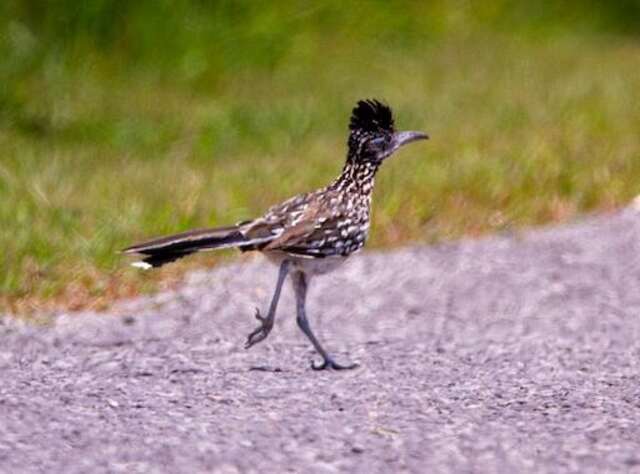
Balance and Stability
Maintaining balance and stability is a critical aspect of a bird’s mode of movement, with research indicating that birds rely on a combination of visual, vestibular, and proprioceptive cues to achieve optimal motor coordination.
A bird’s center of gravity is an important factor in determining its ability to balance and control movement.
Birds with a lower center of gravity, such as ground-dwelling birds, are more stable than those with a higher center of gravity, such as birds of prey.
Additionally, leg placement plays a crucial role in a bird’s balance and stability.
Birds with legs positioned closer to their center of gravity, such as hopping birds, are more agile and can make quick directional changes.
Muscle control is another factor that affects a bird’s mode of movement. Different types of birds have varying degrees of muscle control, which can impact their ability to balance and move.
Small birds like chickadees possess a higher degree of motor control than larger birds like hawks. This allows them to make quick and precise movements, such as hopping from branch to branch.
In contrast, larger birds rely more on their wings for movement and may have less precise control over their leg muscles.
In conclusion, a bird’s ability to maintain balance and stability is a complex process that involves a combination of factors including center of gravity, leg placement, and muscle control.
These factors play a significant role in determining a bird’s mode of movement, whether it be hopping or walking.
However, a bird’s mode of movement is not solely determined by these factors, as the influence of evolutionary history also plays a crucial role.
Understanding the interplay between these factors can provide insight into the diverse range of locomotion strategies used by birds.
Table: Balance and Stability
| Bird Behavior | Description |
|---|---|
| Hopping | Hopping birds have a lower center of gravity, providing them with greater stability when hopping from branch to branch or navigating uneven surfaces. |
| Walking | Walking birds have longer legs, which contribute to better balance and stability while walking on various terrains or perching on elevated structures. |
Influence of Evolutionary History
The manner in which a bird moves is largely influenced by its evolutionary history, as the development and adaptation of locomotion strategies were shaped by environmental pressures and niche specialization.
Evolutionary influences have resulted in the emergence of diverse locomotion strategies, such as hopping and walking, which have conferred adaptive advantages in different habitats and environments.
Comparative analysis of the locomotion strategies of different bird species reveals that the mode of movement is not only dependent on the bird’s body structure and anatomy, but also on its evolutionary history.
One of the key factors that have influenced the evolution of bird locomotion is their habitat and environment.
Different habitats and environments have posed unique challenges that have required birds to develop specialized locomotion strategies.
For example, birds that inhabit dense forests have evolved hopping strategies that allow them to move rapidly through the trees and avoid predators.
On the other hand, birds that inhabit open savannas have developed walking strategies that enable them to move over longer distances and forage for food.
Another factor that has influenced bird locomotion is their diet and feeding habits.
Birds with specialized diets, such as seed-eating birds, have evolved hopping strategies that allow them to move quickly between feeding sites and avoid predators.
In contrast, birds with more generalist diets, such as insectivores, have developed walking strategies that enable them to move over a wider range of habitats and locate their prey.
Overall, the mode of movement of a bird is a complex trait that has been shaped by a range of evolutionary factors, including habitat, environment, diet, and feeding habits.
By understanding how these factors have influenced the evolution of bird locomotion, scientists can gain important insights into the diversity of locomotion strategies and the adaptive advantages they confer.
In the next section, we will explore the role of bird migration in shaping the evolution of bird locomotion.
Bird Migration and Locomotion
Bird navigation and migratory patterns are an essential aspect of their survival. Birds have evolved various mechanisms to navigate through vast distances during seasonal migrations.
They use environmental cues such as celestial navigation, geomagnetism, and visual landmarks to guide their way.
These cues also help birds to determine their location and direction, which is crucial for the success of their journey.
During migration, birds alternate between flight and terrestrial movement.
The choice of movement depends on various factors such as the availability of food, the presence of predators, and the physical limitations of the bird’s body structure.
Some birds like the Northern Wheatear, which migrate over vast distances between the Arctic and Africa, have a unique hopping behavior.
Hopping allows them to conserve energy while crossing vast terrains, especially when the ground is unsuitable for walking.
Other birds like the African Ostrich, which inhabit open grasslands and savannahs, have evolved to walk as their primary mode of movement.
Walking allows them to move quickly across vast distances while conserving energy. Ostriches have long, muscular legs that can cover up to sixteen feet in a single stride.
Their wings, which are too small to support flight, are used for balance and steering during running.
In conclusion, bird navigation and migratory patterns are essential factors that influence their mode of movement.
The choice of movement depends on various factors such as the availability of food, the presence of predators, and the physical limitations of the bird’s body structure.
During migration, birds alternate between flight and terrestrial movement, and the choice of movement is unique to each species.
In the subsequent section, we will discuss flight vs. terrestrial movement in more detail.
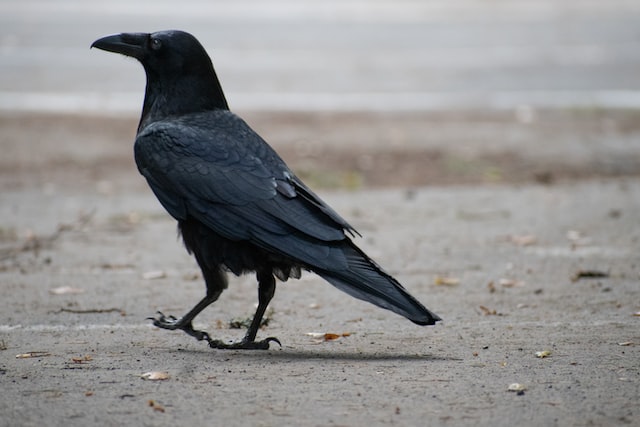
Flight vs. Terrestrial Movement
Interestingly, it seems that while birds have the ability to fly, some have evolved to primarily use terrestrial movement as a means of conserving energy and traversing across vast distances.
This suggests that there are comparative advantages and physiological constraints that influence a bird’s decision to hop or walk.
- Comparative advantages: Hopping birds are better adapted to moving quickly through dense vegetation, which makes them more effective at foraging for food and avoiding predators. On the other hand, walking birds are better suited for covering longer distances and moving across open terrain. This is because their longer legs allow them to take longer strides, which helps them conserve energy over time.
- Physiological constraints: The decision to hop or walk is also influenced by a bird’s body structure and anatomy. For example, birds with shorter legs have smaller muscle mass and less surface area to support their weight. As a result, hopping is a more energy-efficient mode of movement for these birds. Conversely, birds with longer legs have larger muscle mass and more surface area to support their weight, which makes walking a more energy-efficient mode of movement.
- Ecological implications: The choice between hopping and walking also has ecological implications. For example, hopping is a more effective mode of movement in densely vegetated areas, which allows hopping birds to access resources that walking birds cannot. This can give hopping birds a competitive advantage in certain environments. Conversely, walking is a more effective mode of movement in open areas, which makes walking birds better adapted to certain ecological niches.
In conclusion, the decision to hop or walk is influenced by a variety of factors, including body structure, ecology, and physiology.
These factors determine a bird’s comparative advantages and physiological constraints, which ultimately determine the most energy-efficient mode of movement for that bird.
This suggests that the differences in leg length and shape between hopping and walking birds may play an important role in determining their ecological success and survival.
In the next section, we will explore these differences in more detail.
Differences in Leg Length and Shape
Leg length differences and foot shape variations are some of the key factors that determine whether a bird hops or walks.
Hopping birds, such as sparrows and finches, have shorter legs and stronger feet, which enable them to hop from branch to branch or forage for food on the ground.
In contrast, walking birds, such as ostriches and emus, have longer legs that allow them to cover greater distances on foot.
Additionally, their feet are adapted for stable and efficient walking, with larger and more spread-out toes that distribute their weight evenly.
Adaptations for locomotion are strongly linked to a bird’s habitat and environment.
For instance, hopping birds are typically found in more cluttered and densely vegetated areas, where they need to be agile and maneuverable to navigate their surroundings.
Walking birds, on the other hand, are found in more open and arid environments, where they need to cover long distances to find food and water.
Consequently, their leg length and foot shape are optimized for these different habitats, allowing them to maximize their chances of survival.
The evolutionary history of bird locomotion has also played a role in shaping the leg length and foot shape of different species.
For example, some birds have evolved to fly less frequently and rely more on terrestrial movement due to environmental pressures or competition from other species.
This can result in a shift towards shorter legs and stronger feet, as seen in hopping birds.
Other birds have evolved to become specialized runners or walkers, such as the ostrich and the emu, which have developed long, powerful legs that allow them to reach high speeds on land.
Understanding the differences in leg length and foot shape between hopping and walking birds can help us appreciate the incredible diversity of bird locomotion.
By examining how birds have adapted to their environments and evolved over time, we can gain insight into the complex and fascinating world of avian biology.
Table: Differences in Leg Length and Shape
| Leg Feature | Hopping Birds | Walking Birds |
|---|---|---|
| Leg Length | Shorter | Longer |
| Leg Shape | Muscular and Sturdy | Slim and Streamlined |
| Foot Structure | Strong Grip | Flexibility and Dexterity |
In the next section, we will explore the benefits and drawbacks of hopping vs. walking, and how these different modes of movement affect a bird’s behavior and survival.
Benefits and Drawbacks of Hopping vs. Walking
Understanding the advantages and disadvantages of the various modes of movement in birds provides valuable insight into the complex interplay between habitat, environment, and evolutionary history, and sheds light on the diverse strategies employed by different species to survive and thrive in their respective niches.
Hopping and walking are two of the most common modes of movement in birds, and both have unique benefits and drawbacks that impact bird behavior.
Advantages of hopping for birds include increased agility, balance, and maneuverability, which are particularly useful for birds that move through complex environments such as dense vegetation or rocky terrain.
Hopping also allows birds to cover more ground more quickly than walking, which can be advantageous when searching for food or escaping predators.
However, hopping requires more energy than walking, and is not as efficient for sustained movement over long distances.
Additionally, hopping can limit a bird’s ability to carry heavy loads or engage in certain behaviors, such as swimming or climbing.
Walking, on the other hand, is a more energy-efficient mode of movement that allows birds to travel long distances without expending too much energy.
Walking also provides a stable base for birds to engage in a variety of behaviors, such as foraging, preening, and roosting.
However, walking can be slower and less maneuverable than hopping, which can be a disadvantage in certain environments.
Additionally, the genetic basis of hopping and walking in birds is complex, and it may not be feasible for birds to transition between these modes of movement.
In conclusion, understanding the advantages and disadvantages of hopping and walking in birds provides valuable insight into how these modes of movement impact bird behavior and survival.
While hopping provides increased agility and maneuverability, it requires more energy and may limit certain behaviors.
Walking, on the other hand, is more energy-efficient and provides a stable base for a variety of behaviors, but may be slower and less maneuverable.
These factors are influenced by a variety of factors, including habitat, environment, and evolutionary history, and can vary widely between different bird species.
Table: Benefits and Drawbacks of Hopping vs. Walking
| Hopping Birds | Walking Birds |
|---|---|
| Efficient on uneven terrain | Better stability on flat surfaces |
| Quick bursts of speed | Consistent and sustained movement |
| Limited agility and maneuverability | Greater maneuverability and versatility |
| Energy-efficient hopping | Energy-efficient walking |
In the next section, we will explore some examples of hopping and walking birds to further illustrate these differences.
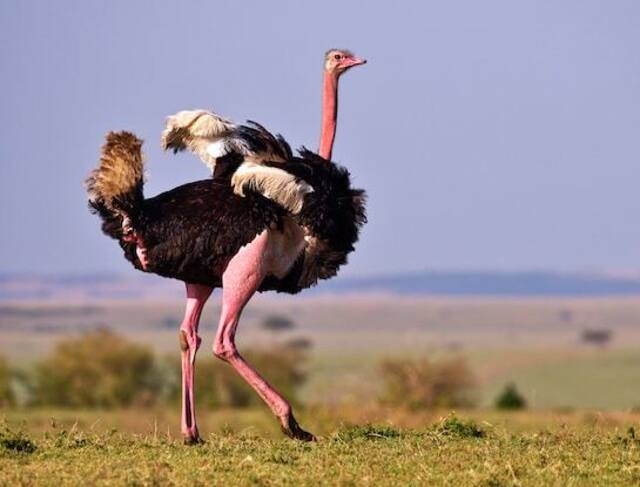
Examples of Hopping and Walking Birds
Exploring examples of the different modes of movement in birds can provide valuable insights into how habitat, environment, and evolutionary history influence the locomotion strategies used by different species.
Hopping birds, such as sparrows, finches, and robins, use a hopping or bouncing motion to move around.
These birds have strong, muscular legs and feet that allow them to push off the ground with enough force to propel themselves forward.
Hopping is an efficient mode of movement for birds that live in areas with dense vegetation or uneven terrain.
These birds can quickly move from branch to branch or navigate through tall grass without getting tangled up.
Walking birds, on the other hand, use a striding motion to move around. Examples of walking birds include chickens, turkeys, and ostriches.
These birds have longer legs and a more upright posture than hopping birds, which allows them to take longer strides with each step.
This mode of movement is ideal for birds that live in open areas, such as grasslands or deserts, where there are fewer obstacles to navigate around.
Walking also allows these birds to cover longer distances more efficiently than hopping.
Both hopping and walking birds have adaptations for mobility that are specific to their mode of movement.
Hopping birds have shorter, stronger legs and feet with sharp claws that allow them to grip onto branches or other surfaces.
Walking birds have longer, more slender legs that are designed for speed and balance. These differences in anatomy reflect the unique demands placed on each species by their environment and feeding habits.
Understanding the different modes of movement used by birds can provide valuable insights into the role of predators and prey.
For example, birds that use hopping as their primary mode of movement may be more vulnerable to predators that are adept at climbing, such as snakes or cats.
Walking birds, on the other hand, may be better able to outrun predators that rely on speed and agility to catch their prey.
By studying how birds move and adapt to their environment, we can gain a better understanding of the complex interactions that shape the natural world.
Table: Examples of Hopping and Walking Birds
| Hopping Birds | Walking Birds |
|---|---|
| Robins | Pigeons |
| Sparrows | Ducks |
| Towhees | Swans |
| Nuthatches | Peacocks |
Role of Predators and Prey
The locomotion strategies employed by birds are shaped by the selective pressures imposed by predators and prey, providing valuable insights into the complex ecological interactions that occur in natural ecosystems.
Predators have influenced the evolution of hopping birds, as their hopping movements allow for quick bursts of speed and agility to evade predators.
Prey behavior is equally important, as hopping birds have adapted to feed on insects on the ground. By hopping, they can quickly move from one spot to another to capture prey.
On the other hand, walking birds have evolved in response to different selective pressures.
Their movements are slower and more deliberate, which allows them to hunt for food while moving stealthily through their environment.
This is particularly useful for birds that live in dense vegetation or tall grasses, where hopping would be impractical. The ability to walk also allows them to wade through water to catch fish or crustaceans.
The role of predators and prey behavior is not the only factor influencing a bird’s mode of movement. Body structure and anatomy, habitat and environment, and diet and feeding habits also play a role.
For example, some birds have long legs and necks that allow them to wade through water, while others have short, powerful legs that enable them to run quickly on land.
The environment in which a bird lives also influences its mode of movement. For example, birds that live in trees are more likely to fly, while birds that live on the ground are more likely to walk or hop.
Understanding the factors that influence a bird’s mode of movement is essential for developing effective conservation strategies.
By studying the ecological interactions between predators and prey, scientists can gain important insights into the behavior and ecology of different bird species.
This knowledge can then be used to develop conservation strategies that protect and preserve bird populations and their habitats.
Future research in this area will continue to shed light on the complex interactions between birds and their environment, and will help us to better understand and appreciate the diversity of bird life on our planet.
Future Research and Implications for Conservation
Research in the field of bird locomotion will continue to soar to greater heights, shedding light on the intricate interplay between avian anatomy, behavior, and ecology, ultimately contributing to the development of effective conservation measures that safeguard these feathered creatures and their habitats.
Future research directions will focus on understanding the ecological significance of bird locomotion, particularly the role of hopping and walking in the survival and reproduction of different bird species.
This will involve investigating the relationship between bird movement patterns and their habitat use, feeding behavior, and predator-prey interactions.
Conservation implications of bird locomotion research are significant, as it can inform the development of management strategies that promote the conservation of bird populations and their habitats.
For instance, understanding the factors that influence a bird’s mode of movement can help identify critical habitats and corridors that are essential for the survival of different bird species.
This information can be used to design effective conservation plans that prioritize the protection of these habitats and the restoration of degraded areas.
Moreover, research on bird locomotion can also contribute to the development of innovative technologies and tools that aid in bird conservation efforts.
For example, understanding the biomechanics of bird movement can help design more efficient and safe bird-friendly structures, such as wind turbines and power lines, that reduce bird mortality rates.
Additionally, research on bird locomotion can also inform the development of monitoring and tracking systems that aid in the management and conservation of bird populations.
In conclusion, research on bird locomotion has significant implications for conservation efforts, as it provides insights into the ecological significance of bird movement patterns and their relationship with habitat use, feeding behavior, and predator-prey interactions.
Future research directions will continue to explore these relationships, contributing to the development of effective conservation measures that safeguard bird populations and their habitats.
Ultimately, this research can inform the development of innovative technologies and tools that aid in bird conservation efforts.
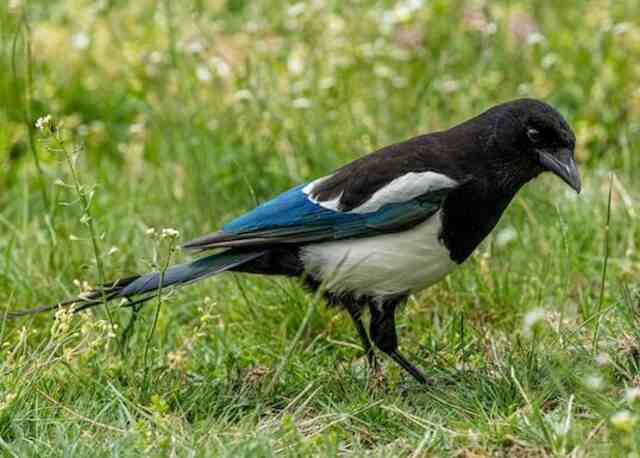
Frequently Asked Questions
What is the average lifespan of hopping birds compared to walking birds?
Life expectancy is an important aspect of bird biology that can be influenced by many factors.
Research suggests that there are no significant differences in the average lifespan of hopping birds compared to walking birds.
However, ecological advantages and evolutionary adaptations may play a role in determining a bird’s lifespan.
For example, birds with larger body sizes tend to have longer lifespans, as they are less vulnerable to predation.
Additionally, birds that inhabit environments with fewer predators or have access to high-quality food sources may also have longer lifespans.
Overall, although hopping and walking are different modes of movement used by birds, there is no evidence to suggest that they have a significant impact on life expectancy.
Are there any hybrid birds that can both hop and walk?
Hybrid birds that can both hop and walk are rare, as the mode of movement is usually determined by the bird’s anatomy and evolutionary adaptations.
However, there are some instances where a bird may exhibit locomotion diversity, such as the Australian magpie-lark, which hops on the ground but also flies and walks.
These adaptations may be influenced by a range of factors, including body structure, habitat, environment, and diet.
The evolutionary history of bird locomotion has also played a significant role in shaping the ways in which birds move, with certain species evolving unique adaptations to suit their specific needs.
Overall, the locomotion diversity of birds is a fascinating area of study that sheds light on the complex ecological and evolutionary processes that have shaped the natural world.
Can a bird switch between hopping and walking depending on its environment?
Birds have the ability to adapt to their environment, which can lead to changes in their mode of movement.
Environmental adaptation is an evolutionary advantage that allows birds to thrive in different habitats and conditions. Behavioral patterns vary depending on the bird’s body structure, anatomy, and feeding habits.
Some birds, such as the American Robin, are capable of switching between hopping and walking depending on their environment.
This ability allows them to navigate through different terrains and optimize their foraging behavior.
While the factors that influence bird locomotion are complex and multifaceted, evolutionary adaptations and environmental pressures play a crucial role in shaping a bird’s mode of movement.
Does the mode of movement affect a bird’s ability to fly?
The mode of movement in birds, whether hopping or walking, can have a significant effect on their ability to fly.
The evolutionary advantages of each mode of movement have ecological implications that can impact a bird’s overall fitness.
Hopping birds, such as sparrows, have shorter legs that allow for quick bursts of movement and efficient foraging, but may have a limited ability to take off quickly and fly long distances.
Conversely, walking birds, like chickens, have longer legs that allow for sustained movement and faster takeoff, but may have a heavier body structure that hinders flight.
Therefore, a bird’s body structure and mode of movement are important factors in their ability to fly and ultimately survive in their environment.
Are there any cultural or symbolic meanings associated with hopping or walking birds in different parts of the world?
Folklore interpretations, historical significance, and regional beliefs are associated with the movement of birds in various parts of the world.
In ancient Egyptian mythology, the ibis bird was considered sacred and associated with the god Thoth, who was believed to be the god of wisdom, knowledge, and writing.
In Native American cultures, the hopping movement of the roadrunner bird is believed to represent agility, quickness, and cunningness.
The walking movement of the crane bird is also valued in some cultures, such as in Japan, where it is considered a symbol of longevity, good fortune, and loyalty.
These cultural and symbolic meanings associated with the movement of birds reflect the historical significance and regional beliefs of different communities.
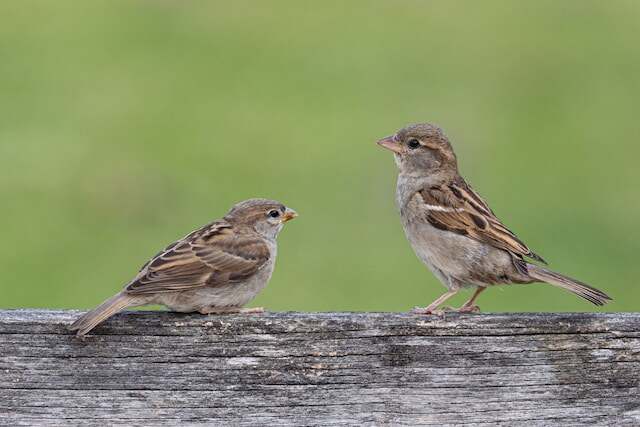
Conclusion
In conclusion, the decision of whether to hop or walk is a complex one for birds, involving a combination of factors such as anatomy, muscle usage, habitat, and diet.
While hopping may provide certain benefits such as energy efficiency and increased mobility in certain environments, walking allows for greater stability and balance, especially on uneven surfaces.
Ultimately, the mode of movement that a bird adopts is a result of its evolutionary history and the adaptations it has developed over time in response to its environment.
Further research into the mechanics of bird locomotion may provide valuable insights into the evolution of birds and their ecological roles.
Additionally, understanding the factors that affect bird movement can have important implications for conservation efforts, particularly in the face of habitat loss and climate change.
By studying the movement patterns of different bird species, researchers can gain a better understanding of how to protect and preserve these fascinating creatures for future generations.
As the old adage goes, ‘the early bird catches the worm’ – and with continued research and conservation efforts, we can ensure that the birds of our planet continue to thrive for generations to come.

